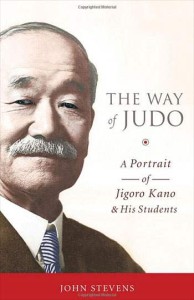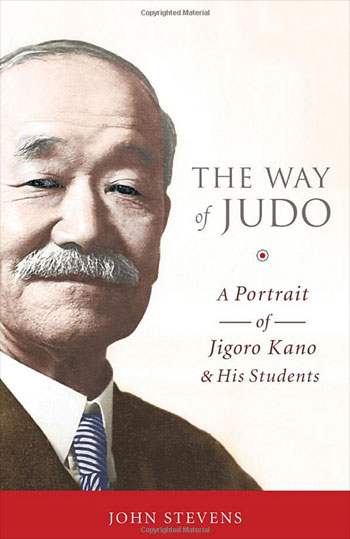 A biography of the founder of Kodokan judo, Jigoro Kano, “The Way of Judo” benefits from the eventful and insightful life of its subject, but unfortunately proves to be a difficult read. John Stevens, the book’ author, writes in a flatly impersonal and didactic style, stuffed with encyclopaedic details and anecdotes, and learning about Kano and his martial art turns out to be not nearly as exciting nor inviting as it should have been. If one wished to learn about the life of Kano, there are few essentials in this cluttered biography that aren’t covered with better clarity in the Wikipedia entry. It would not be wrong to remark that this epitome of a true martial artist, and a fascinating subject who lived in an equally fascinating time in history, deserved a book with just a little more chutzpah.
A biography of the founder of Kodokan judo, Jigoro Kano, “The Way of Judo” benefits from the eventful and insightful life of its subject, but unfortunately proves to be a difficult read. John Stevens, the book’ author, writes in a flatly impersonal and didactic style, stuffed with encyclopaedic details and anecdotes, and learning about Kano and his martial art turns out to be not nearly as exciting nor inviting as it should have been. If one wished to learn about the life of Kano, there are few essentials in this cluttered biography that aren’t covered with better clarity in the Wikipedia entry. It would not be wrong to remark that this epitome of a true martial artist, and a fascinating subject who lived in an equally fascinating time in history, deserved a book with just a little more chutzpah.
Kano was born after Commodore Perry and the United States Navy steamed into Tokyo harbor and as Japan’s era of rapid modernization was underway, in 1860. As the influx of new ideas came in from the West and Japan rushed to catch up on the world stage, disinterest in the “old” martial arts inevitably grew. Jujitsu was one such dying classical fighting style; a young Kano, nevertheless, was keen on learning it—among many other martial arts in which he was proficient— and it was from jujitsu that he ultimately developed judo, a more modern martial arts system. The two styles are very similar, both principally utilizing throws and takedown techniques, but judo is arguably more applicable for everyday self-defense. That was something which Kano, who measured up to just a few inches over five feet in height, had in mind. (At the same time, interestingly, judo became the first martial art to gain international prominence and in 1964 it became an Olympic sport.) And, as always, Kano strove as to make the study of judo an spiritual education of the mind and spirit, and not only the body.
“The Way of Judo” is not as much a conventional chronicle of the life of a martial arts master as a liberal grouping of material relevant to the history of the martial art, and apart from the biography of Kano and the account of the birth of judo, there are many pages devoted to bite-sized biographies of Kano’s most famous students. There were Japanese war heroes and war criminals, dozens of judo champions and top competitors, business tycoons and influential moguls, Chinese revolutionaries, and a surprising amount of women. The few paragraphs on each student, especially the more unusual ones, are not without their merits, but there is no doubt that Kano himself is the most remakable character. Besides being the founder of judo, he was firstly a teacher. A long career in the Ministry of Education starting in 1891 saw Kano become the leading proponent of physical education in Japan. In 1909 he was elected to the International Olympic Committee and represented his country in the many years that followed. In short, he was much, much more than a martial artist, but then again it was the martial arts that made him who he was. Hapharzadly included in the book are many of his wise sayings and teaching philosophies, often contained in his calligraphies, which are more than worth poring over for their profundity.

